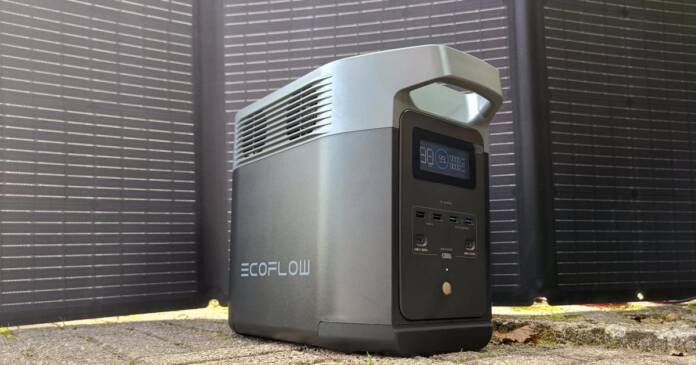The mobile solar generator Delta 2 from Ecoflow is almost identical to the previous model – but there are differences that are decisive for the purchase. TechStage tested the Delta 2.
Solar generators with an integrated battery enable a self-sufficient power supply far away from the power grid. Thanks to various connection options including a 230 V socket and sufficiently high continuous output, the devices are not only ideal for camping and leisure, but also for work and as an emergency power supply. The power stations can be charged using either a power supply unit or a photovoltaic panel, and it usually takes seven to eight hours. The Ecoflow Delta 2 can do that better, which we also checked.
This individual test is about the successor to an Ecoflow Delta (test report) , which has made it into the best power stations in our top 10 thanks to a successful overall package with great extras. Apart from the 1800 W continuous output and more than 1000 Wh capacity, the fast charging and UPS functions were already attractive in the predecessor. The changes to the first variant can only be seen at second glance, but we took a close look at and tested version 2. This individual test is part of the Powerstation theme world .
design and scope of delivery
At first glance, the revised Ecoflow Delta 2 looks like the previous model, only the height has increased by one cm. The Delta 2 now measures 21 × 40 × 28 cm (W/L/H). At 12 kg, the power station weighs around two kg less than the previous model, which is noticeable when carrying it. Thanks to the two handles on the short sides, the power station is mobile, but less suitable for hikes or bike tours due to its heavy weight.
The biggest changes concern the internal batteries. Instead of NCM batteries with a nominal capacity of 1260 Wh, Ecoflow uses LiFePO4 batteries with 1024 Wh for the Delta 2. Apart from the lower weight and the lower capacity, this is primarily noticeable in the service life. In the first variant, the manufacturer promises 80 percent residual capacity after more than 800 charging cycles. The Delta 2 retains this 80 percent even after 3000 charging cycles – according to the data sheet.
The design taken from the Delta looks modern and high-quality. Unlike other manufacturers, Ecoflow does without flashy colors and so this mobile socket looks more appropriate for the trade fair stand and in the office than for the beach or campsite. The wide rubber feet ensure a stable hold, but the surface attracts dust and lint. The case with the open ventilation slots is not waterproof. The processing of the Delta 2 is impeccable, even if we would have liked protective covers for the connections.
Connections and screen are distributed over a total of three sides and not arranged centrally. The bright and clear status display, a total of six USB ports, their power button and the on/off button are on the front. In addition to the input and output power, the screen shows the available battery capacity as a percentage and the calculated remaining running time. If that is not enough, you can also communicate with the power station via WLAN and Bluetooth and change various settings, switch outputs on and off or monitor the performance data via the app.












